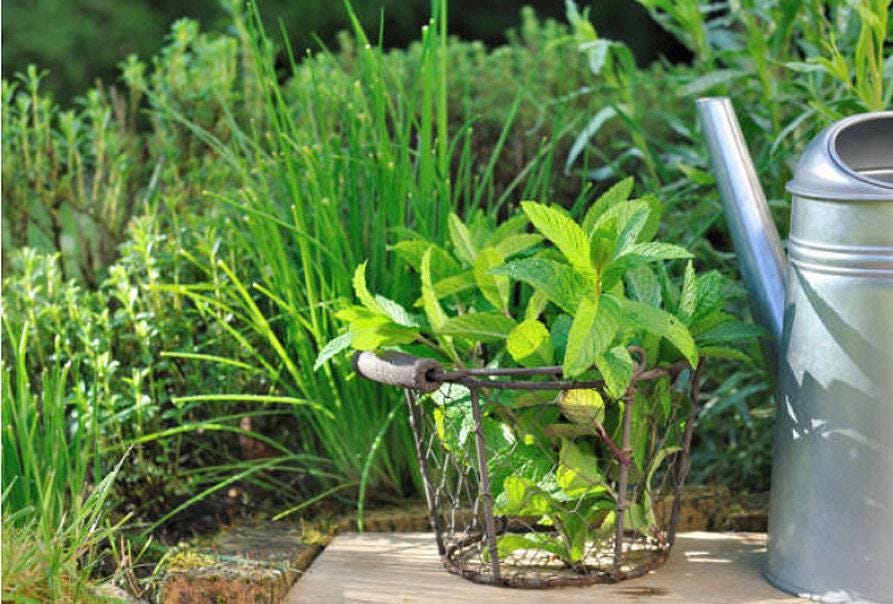A favorite for flavoring tea and desserts, also good to plant near roses to deter pests. Use the leaves for hot teas, and as an essential summer garnish on cold drinks, fruit salads, ice cream, and any other desserts. Red-violet flowers in summer are edible too. Currently, Michigan grows the most acres of mint in the United States; the United States provides about half the world's peppermint supply.
Mint received its name from the Greek legend of "Minthe," a river nymph who was turned into a lowly plant to be trodden underfoot; the stimulating, sweet smell perpetuated the memory of Minthe. Most likely, peppermint hybridized from spearmint and watermint; its culinary and health use dates back to at least 1550 BC, originating in Northern Africa and the Mediterranean. According to the records of ancient historian Pliny in the first century AD, the Greeks and Romans highly valued this herb, using it for sauces and beverages as well as to freshen rooms and linens. In these civilizations, mint even acted as currency.
*Note - Peppermint can sometimes be a bit difficult to grow from seed. Only recommended for a determined gardener :)
~ planting ~
Sow indoors 4-6 weeks before last frost. Do not cover the seeds; they need light to germinate. They should sprout within 12 to 20 days at room temperature or slightly warmer (68 to 75°F). Bottom heat will speed germination. Transplant into the garden or container when they have at least 2 sets of true leaves.
Sow outdoors in full sun when warm weather is stable. To sow the seeds outdoors, place them on top of well-worked soil, then sprinkle a fine layer of vermiculite on top of them. If you are sowing directly into the garden, consider placing a row cover over the seeds until they sprout. Plant this in containers or its energetic roots will spread throughout your garden.
~ growing ~
Mint appreciates rich soil, and will benefit from organic matter such as compost. Keep the soil fairly moist, but avoid getting the leaves wet when watering, since this can cause disease. In areas with cold winters, cut the plant down to the ground after frost and provide a thick layer of mulch for protection.
Mint spreads in the garden with gusto via a vigorous root system, so it may be preferable to confine it to planters on the balcony or in a raised bed. Prune plants back hard in early summer to promote good top growth. Bring some inside to grow in a small container over winter to grow on a brightly lit windowsill.
~ harvesting ~
Fresh leaves can be harvested as soon as the plant reaches a height of 3-4". The small, young leaves tend to have the best flavor. Cut the stems down to within 1" of the ground level to allow for new growth. Keep the tops pruned to prevent blooming, since this causes the leaves to deteriorate in flavor. To dry the leaves, hang the stems upside down in a dry location until the leaves feel completely dry; strip them from the stems and keep them in an airtight container. Fresh mint leaves can also be frozen. The flowers are edible and bring distinctive character to salads and sweets.
~ companion planting ~
Mint attracts earthworms, hoverflies and predatory wasps, and repels cabbage moths, aphids, and flea beetles. Mint can spread aggressively, so it may be better to use cut mint as a mulch around Brassicas, or to restrain it in containers around the vegetable garden. Avoid planting near parsley.
~ insect repellent ~
There are more than 50 different mint species and all of them work as an insect repellent. Mint also repels ants, mice and rats. Place crushed mint leaves in small sachet bags and place the sachets in various locations around the house. Crush a few dry mint leaves where ants are active to keep them away.



















